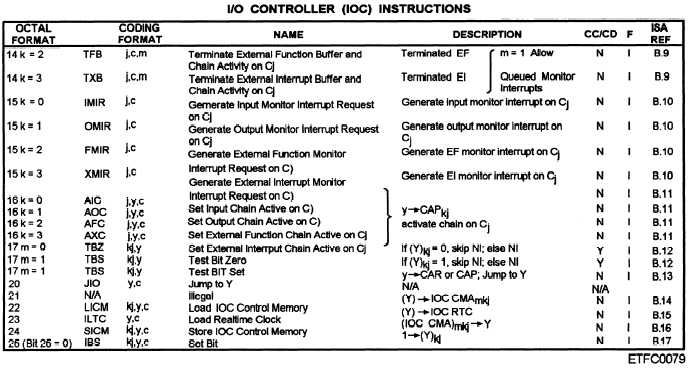transfers to and from the external equipments. See
figure 7-3 for an example.
IOA.— The IOA changes the input and output
control and data signal voltages to the voltage
requirements of the computer or external equipments.
The IOA receives data and control signals from the IOC
logic of the computer, and returns data and interfacing
signals to the IOC logic.
It also transfers data and
control signals to the external equipments and receives
data and interfacing signals from the external
equipments. The IOA logic circuits consist primarily
of line drivers/receivers (linear circuits) and timing
circuits (digital circuits).
Communication between the IOC and IOA is by
means of a bidirectional bus. The IOA communicates
with the external equipments via I/O channels/ports.
The connectors for the input and output channels or
ports are physically located atop the IOA unit (fig. 7-4)
or on the rear of a computer cabinet (fig. 7-5). The type
of interfacing will dictate the type of connectors for the
channels or ports. The IOA is capable of receiving and
sending parallel and serial data.
IOC/IOA INTERFACING.— The IOA is a
completely passive unit and functions under the direct
control of the IOC. The driver circuits pass interfacing
and data signals to the external equipments. The
receivers pass data to the IOC. They are directed by the
IOC using input and output control circuits. The
request circuits pass interface signals to the IOC
Figure 7-3.—Example of a repertoire of IOC commands.
7-4


